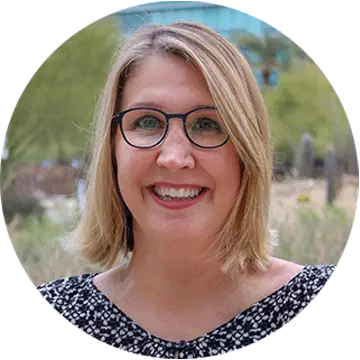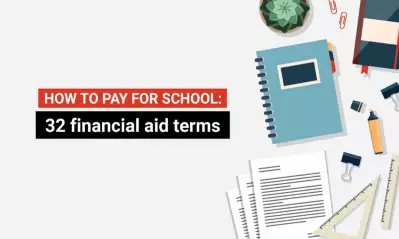A step-by-step guide to repaying student loans

Written by Michael Feder

Reviewed by Chris Conway, Director of Financial Education Initiatives and Repayment Management

Student loan debt is extremely common. Some 48 million Americans collectively owed more than $1.7 trillion for higher education as of September 2022, according to the Council on Foreign Relations. This total is higher than any other form of debt except mortgages.
Though it is possible — and preferable — to find alternative means of paying for college, many students still end up with enough debt that they’re making payments years after graduation. The average amount students owe varies, but one data point says students who graduated from college in 2019 owed an average of $28,950.
So, when looking to pay for college, how should you proceed? The best strategy is to plan ahead, apply for scholarships and grants, request financial aid and, if necessary, find ways to pay for your schooling that integrate responsible borrowing options and reasonable tuition.
In the end, borrowing now means repaying later. And no matter how much you owe, it’s important to make a step-by-step plan for paying off your student loans.
1. Understand what loans you have
Student loans can fall into two categories : federal or private loans. The majority of money borrowed is in the form of federal student loans, but a portion of student debt comes from private student loans.
Federal student loans
Federal loans are offered by the government, so the terms are often more favorable than those from private lenders. Federal student loan
types include Direct Subsidized, Direct Unsubsidized and Direct PLUS.
Direct Subsidized loans are available to students with financial need. The government pays the interest until after your last date of attendance and a grace period, which is usually six months after your last date of attendance.
Unsubsidized loans are not based on student need. Interest payments are not deferred, so the overall cost for this type of borrowing is typically higher.
Direct PLUS loans are for parents of students who want to help with tuition payments. Graduate and professional students can also use this type of borrowing to cover the cost of attending school for a year.
Private student loans
Banks or other financial institutions issue private student loans . This money can cover any school-related expenses, including accommodations and books, depending on the institution.
University of Phoenix encourages students to exhaust federal and state financial aid options before considering private loans. Private loans are subject to a credit review and individual lender terms and conditions. The federal government does not subsidize or guarantee private loans. For more information on the difference between federal and private loans, please visit the Consumer Financial Protection Bureau .
2. Know what you owe
Many students pay for college using several options, including loans and grants, so keeping track of what you owe may not be as simple as looking at one loan statement. You can check the balance of your federal student loans on the Federal Student Aid website . Meanwhile, private lenders offer their own paper statements or provide information via their websites. Make note of the estimated minimum monthly payment amounts so that you can plan for repayment of all your loans.
There are some important details to understand about student loan repayment . For example, depending on the loan, students might receive a grace period after graduation to find a job before their monthly payments begin. You can also work with your loan servicer to make a plan to pay off your loans as fast as possible or take advantage of any forgiveness programs. There are multiple payment plan options to make your monthly payments manageable.
3. Account for all your debts
Forty-eight million Americans have student loans, and it’s likely that that isn’t the only type of debt they have. Think car payments, credit cards and mortgages. It is important, therefore, to understand the money owed for college in the overall context of your debts and budget.
More importantly, this information can help you prioritize repayment of certain debts. For example, you may decide to put extra money for debt repayment toward high-interest credit cards or pay off the last few months of an auto loan before making larger payments on your student loans.
4. Rank your debts in order
One method for deciding which debts to focus on first is to rank them according to interest rates. You can then focus any additional payments above the minimum on the loans with the highest interest rates. If you make larger lump-sum payments on high-interest debt, you will pay less interest, reducing the overall cost of the loan.
The highest interest rates are usually associated with unsecured loans and credit cards. You can focus on these first unless you are in danger of defaulting on secured loans, which could cause you to lose whatever collateral you provided (e.g., your car or home).
Another method some like to use is the “snowball method .” This approach suggests making minimum payments and targeting low-balance loans or credit cards until they’re paid off. Then, you move to the next highest balance and repeat the process. Each paid-off debt is meant to leave you with more money to put toward remaining debts in the following months. The goal is to gain quick wins as debts are paid off.
5. Research all your repayment options
There are programs offering debt relief for students, alternative payment options and even loan forgiveness. For example, the Public Service Loan Forgiveness program offers to forgive the remaining balance on student loans after 120 on-time payments. More than 9 million students
in public service jobs may be eligible for this program.
Other repayment options that can help you keep your monthly loan payments from eating up too much of your monthly budget may include:
- The REPAYE Plan
. This program requires you to pay 10% of your discretionary income toward your student loan each month. This amount is recalculated annually.
- The Income-Based Repayment Plan. This plan has a 10% or 15% discretionary income cap. Any outstanding balance is forgiven after 20 or 25 years of payments.
- The Income-Contingent Repayment Plan. This allows the borrower to choose whichever is least expensive: 20% of their discretionary income or standard monthly payments on a 12-year repayment plan.
For more information on the difference between federal and private loans, please visit: http://www.consumerfinance.gov/paying-for-college/choose-a-student-loan/ .
6. Set your monthly budget
A $30,000 student loan can be intimidating. However, it might feel more manageable once you break it down into monthly payments. The key to mastering these monthly payments is to create a budget for all your expenses. You can then find areas to save money and put your savings toward your student loan or other debt payments to, ideally, become debt-free.
Options for saving money for debt payments include forgoing luxuries, purchasing generic products instead of brand names and avoiding excessive entertainment spending.
Most importantly, you need to create a realistic budget that does not force you to forgo basics and leaves some room for a reasonable level of enjoyment and entertainment. For instance, you could choose one streaming service per month and purchase food for a fancy weekly or monthly meal instead of indulging more often.
Don't forget to save
You should balance your loan repayment ambitions with the need to build savings for retirement , emergencies and unexpected expenses. This could prove challenging, and for some impossible given their current circumstances, but budgeting should be able to at least help get you started on the right path.
7. Determine your repayment time frame
Typically, federal student loans with a standard plan are a 10-year repayment period. However, this isn’t always the case for everyone given that life circumstances may prevent payments, or at least higher payments if you are on an income-driven payment plan.
Once you identify your expenses and build a sustainable budget, you should have an idea of how long it will take to repay your student loan. In fact, you can theoretically build a timeline for the repayment of all your debts to not only fully repay your student loans but become entirely debt-free.
What to do if you can’t pay off your student loans
You may have an excellent plan, but unexpected events are always a possibility. Unemployment, pay cuts, a growing family, health issues or other costs could derail your repayment efforts and potentially put you in danger of default.
Here are options if your loans become unaffordable:
- Explore income-driven repayment plans, like the REPAYE and Income- Contingent Repayment plans, which can help lower monthly payments and help you qualify for loan forgiveness.
- Talk to your loan servicer about deferment options to postpone payments when you meet certain criteria, such as unemployment.
- Consider debt consolidation
if you have multiple loans. A Direct Consolidation Loan can combine several student loans into one, lowering the monthly payments overall.
- Work with a debt counselor
to make a repayment plan and change financial habits that could increase debts.
The time to start planning is now
Whether you are starting your university education or are years removed from graduation, it is never too early or late to build a plan to pay for your education or pay off your student loans. Learning new strategies, adjusting your financial mindset and exploring repayment plans can all help you manage how you pay for school and pay off your student loans.

ABOUT THE AUTHOR
A graduate of Johns Hopkins University and its Writing Seminars program and winner of the Stephen A. Dixon Literary Prize, Michael Feder brings an eye for detail and a passion for research to every article he writes. His academic and professional background includes experience in marketing, content development, script writing and SEO. Today, he works as a multimedia specialist at University of Phoenix where he covers a variety of topics ranging from healthcare to IT.

ABOUT THE REVIEWER
As Director of Financial Education Initiatives and Repayment Management, Chris Conway works with departments across the University to provide resources that allow students to make more informed financial decisions. She is also an adjunct faculty member for the Everyday Finance and Economics course at the University, and she chairs the National Council of Higher Education Resources College Access and Success Committee. Conway is committed to helping college students make the right financial decisions that prevent future collection activity.
This article has been vetted by University of Phoenix's editorial advisory committee.
Read more about our editorial process.
Read more articles like this:



